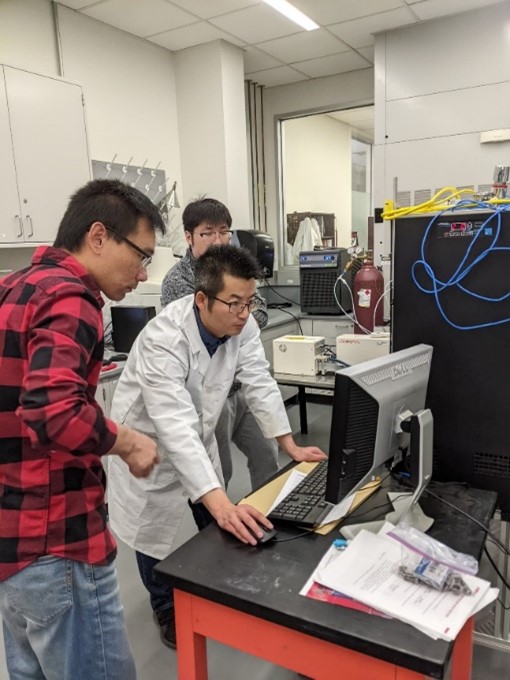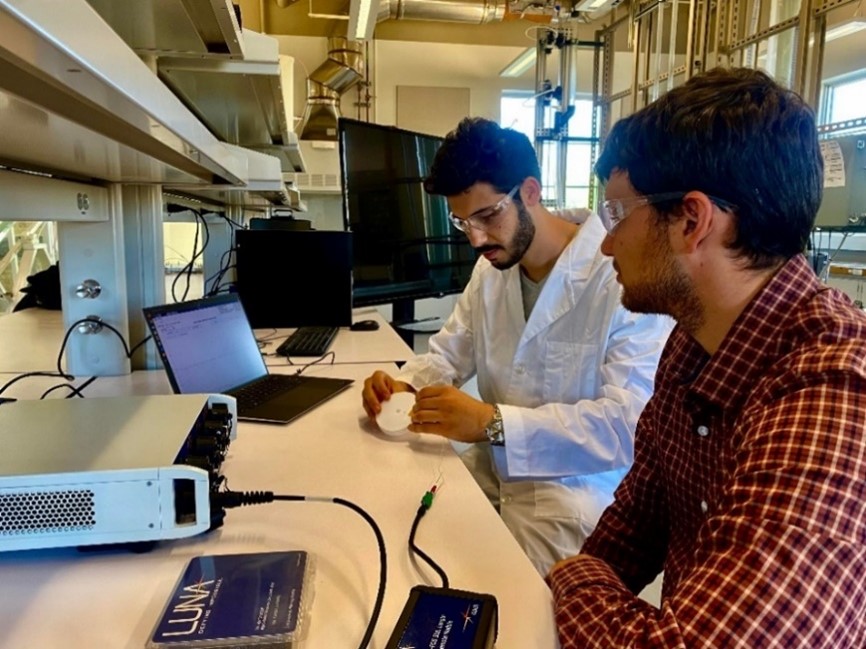Research
CAPRS (Center for Applied Petrophysical & Reservoir Studies)
Primary Investigator: Caprs@ttu.edu
Phone: 806.742.1801

The CAPRS conducts basic and applied research in the general areas of petrophysics and reservoir engineering that educates undergraduate and graduate students from geosciences and petroleum engineering.
Red Raider #1
Primary Investigator:
Dr. Lloyd R. Heinze
lloyd.heinze@ttu.edu
Phone: 806.742.1801 x257

Red Raider No. 1, drilled to a depth of 4120 feet, is the largest test well on university property in the United States. The test well is operated under Texas Tech's Center of Advanced Production Research Operations (CAPRO), and is located on a 8.72 acre tract of Texas Tech property near East Loop 289 in Lubbock, Texas. The Bob L. Herd Department of Petroleum Engineering continues to secure corporate donations for the required surface production equipment.
SWPSC (Southwestern Petroleum Short Course)
Main Contact:
Ronda Brewer
ronda.brewer@ttu.edu
Phone: 806.742.1727

The Southwestern Petroleum Short Course was started in 1953 as an annual conference to disseminate practical technical information to the Oil and Gas Industry. The original concept of the Short Course was as a beam lifting school. Over the years the emphasis has become much broader and now, while still emphasizing artificial lift methods, includes the areas of drilling, well completions, stimulation, workovers, reservoir operations and production handling. The Short Course is unique in that experts in the various disciplines write technical papers and present those papers at the annual conference in a classroom forum type setting. All papers are printed, bound and distributed as the annual proceedings of the Southwestern Petroleum Short Course. The information thus imparted is intended to be practical and immediately useful in solving current problems and in presenting new techniques and practices to the oil and gas industry.
Carbon-Zero Hydrogen Production from Petroleum Reservoirs using Catalytic Microwave Heating
 Dr. Yuan and his PhD student Keju Yan are working on generating hydrogen within petroleum
reservoirs using catalytic microwave heating. The produced hydrogen will then be extracted
to the surface with the help of downhole hydrogen membrane separators. The byproducts
such as solid carbon and minor carbon oxides can be simultaneously sequestrated underground.
Dr. Yuan and his PhD student Keju Yan are working on generating hydrogen within petroleum
reservoirs using catalytic microwave heating. The produced hydrogen will then be extracted
to the surface with the help of downhole hydrogen membrane separators. The byproducts
such as solid carbon and minor carbon oxides can be simultaneously sequestrated underground.
The proposed technology has the potential to directly generate and product clean hydrogen from petroleum reservoirs without any CO2 or methane emissions to the atmosphere. By repurposing depleted oil & gas reservoirs and re-using the existing industrial infrastructures, it will provide a new, low-cost, and carbon-zero technology to decarbonize fossil fuels and enhance the value of the assets in petroleum industry.
Financial support is from the Matejek Family Faculty Fellowship at Texas Tech University, the CH Foundation, and DOE's Hydrogen Shot Incubator Prize Program. Mr. Keju Yan, a Ph. D candidate who mainly conducts experimental work, appreciates the support from the Distinguished Graduate Student Assistantship and the Graduate Research Support Award at Texas Tech University.
Fiber Optic Sensing to Improve Artificial Lift
 Dr. Leggett's lab is utilizing fiber optic sensing technology to gather valuable data
on multiphase flow, including strain, temperature, and noise measurements over long
extents of pipe. Currently, Dr. Leggett's student Omar Abdelkarim is working on a
novel method to track liquid slugs using fiber optic measurements, with the aim of
improving intermittent gas lift technologies. The potential impact of this research
is immense, as it is expected to lead to new methods for increasing production from
unconventional wells.
Dr. Leggett's lab is utilizing fiber optic sensing technology to gather valuable data
on multiphase flow, including strain, temperature, and noise measurements over long
extents of pipe. Currently, Dr. Leggett's student Omar Abdelkarim is working on a
novel method to track liquid slugs using fiber optic measurements, with the aim of
improving intermittent gas lift technologies. The potential impact of this research
is immense, as it is expected to lead to new methods for increasing production from
unconventional wells.
Omar's work will continue as a part of the Texas Tech Gas Lift Consortium, set to launch in January 2024. This consortium will bring together companies interested in improving performance of gas-lifted unconventional wells. If you are interested in learning more about the consortium or the research being conducted by Dr. Leggett and his team, you are encouraged to reach out to him at sleggett@ttu.edu.
Methane Detection and Quantification
Methane is deemed to be one of the greenhouse gasses responsible for climate change. Detecting methane emission will help curtail its emission and prevent climate change. Dr. Hossein Emadi and Mr. Denny Bullard are currently working on methane detection research projects. So far, they have received two industry sponsored projects which address methane detection. They are currently collaborating with the two service providers, SLB and Kuva systems, to enhance methane detection techniques and compare the existing technologies with the developing ones. Two different technologies, fixed sensors, and Optical Gas Imaging (OGI) cameras are being tested and studied at OTC. The plan is to analyze the generated data to thoroughly evaluate the technologies and make recommendations for future usages depending on the application.
We would like to thank SLB and Kuva systems for funding this research project.
Bob L. Herd Department of Petroleum Engineering
-
Address
Bob L. Herd Department of Petroleum Engineering | Box 43111 | Lubbock, TX 79409-3111 -
Phone
806.742.3573 -
Email
webmaster.coe@ttu.edu
